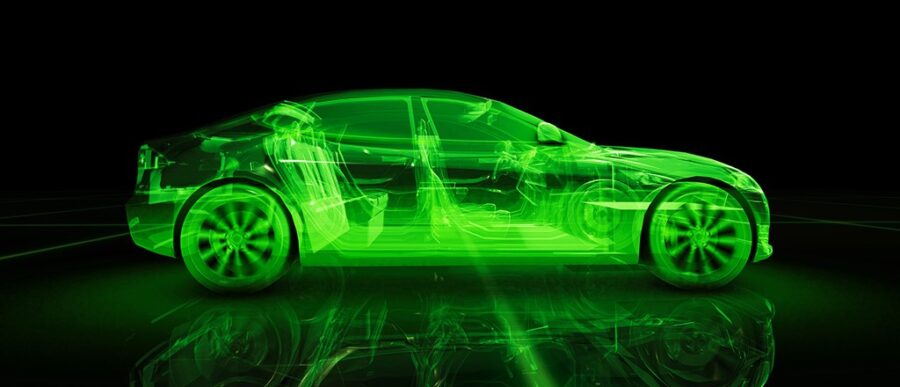U.S. automakers sold 17.2 million vehicles in 2017, nearly 320,000 fewer than 2016, snapping a streak of seven straight years of sales gains. But they did benefit from higher prices for some vehicles, and more demand for higher performance vehicles like SUVs and electric cars. A bullish outlook for 2018 could be dented, however, if the latest tax reforms hurt middle-class spending, or if the federal probe into Russia’s suspected meddling in the 2016 U.S. Presidential election destabilizes the Trump administration, experts say. Meanwhile, automakers have differing preferences in choosing the right technology standards for autonomous vehicles, and changes are likely on the way for fuel economy regulations.
Even as auto sales were down last year, “it was a strong year,” said Wharton management professor John Paul MacDuffie, who is also director of the school’s Program on Vehicle and Mobility Innovation at the Mack Institute for Innovation Management. “Everybody has known that the party would end sometime.” He explained that the record sales in previous years tapped into pent-up demand created during the Great Recession of 2008.
“The party is still on,” said Paul Eisenstein, publisher and editor of The Detroit Bureau.com, a publication focused on the auto industry. He said that auto industry executives are actually upbeat, and “if anything, I think they were surprised that it didn’t go down more.” If auto sales were to fall to 16.9 million or 17 million in 2018, that would have been seen as a record not too long ago, he added.
MacDuffie and Eisenstein discussed the outlook for the U.S. auto industry on the Knowledge at Wharton show on Wharton Business Radio on SiriusXM channel 111. (Listen to the podcast at the top of this page.)
Question Marks Amid Optimism
While the auto companies were happy with the latest tax reform bill, “they’re all hoping that it doesn’t mess things up for the middle class,” said Eisenstein. If the middle class and other car-buying segments find their finances crunched by taxes, “that could send car sales into a tizzy,” he added. The fate of the North American Free Trade Agreement, which the Trump administration wants to disband or overhaul, is another worry for the industry. The U.S. auto industry is a huge beneficiary of NAFTA, which allows duty-free trade between the U.S., Canada and Mexico.
Eisenstein cited another factor that could spoil the party. “Everybody is trying to whistle past one potential graveyard and that is [about] what could happen if things get a little bit weird with [special counsel Robert] Mueller’s investigation, and anything that could happen that shakes up the confidence and instability with the Trump administration.” Mueller is probing Russia’s alleged interference in the 2016 presidential election.
“Electric was so tied up with the notion of green environmentalism that I think it made [buying one] seem like a dutiful kind of thing that you did for the right reasons. But it was boring.”–John Paul MacDuffie
Outside of the Mueller probe, Eisenstein saw “three big question marks” facing the auto industry in 2018. One is if sedans will continue to sell, he said, pointing to Ford Motor Company’s announcement on Tuesday that it would cut its car portfolio by 10% and increase its SUV portfolio by 10% — a move towards higher-margin vehicles. The second issue relates to spending on development of electric vehicles, and the third has to do with spending on developing autonomous vehicle technologies. Here, he noted that automakers “are spending tens or even perhaps $100 billion on technology that they don’t know if the market will accept.”
Which Level is Best?
With autonomous vehicles, the industry faces strategic dilemmas, said MacDuffie. Most automakers are working on “lower levels of autonomy,” where they could keep rolling out additional features. But the big question is how much they need to invest in the so-called Level 3 or Level 4 technologies for autonomous vehicles (AVs), he said. Level 3 is “conditional automation,” where the driver does not have to monitor the system, but must be able to resume control at all times. Level 4, called “high automation,” is where the driver is not required to be resume control and the AV system can take care of defined use cases.
Automakers have varying strategies for how to approach those issues. MacDuffie pointed out that Google, for example, is pushing for a fully automated system where the driver is not required throughout the entire journey.
There’s no question that technologies for both electric vehicles and AVs will reach a critical mass at some point in time, Eisenstein said. “It’s just a question of when do you shoot your bullets,” he said. “Do you spend your money now or do you hold tight right now and start to see who’s winning and losing.”
A New Charge for Electric Vehicles
MacDuffie saw more demand for electric vehicles, and predicted a big push in both investments and consumer demand. He noted that electric vehicles saw “more of an uptick” in 2017, especially with high demand for those cars in China and with some automakers announcing plans to discontinue internal combustion engines.
“Not enough capacity exists globally outside of Takata to build all the replacement parts to get this done quickly.”–John Paul MacDuffie
Eisenstein, too, was bullish about electric vehicles, and listed the major product milestones ahead. Last weekend, Ford teased an electric SUV called Mach 1, which he thought could rival Tesla’s offerings and also Porsche’s Mission E. Audi and Hyundai are among the other makers with electric vehicle brands that have longer-lasting batteries and higher performance. At the same time, prices of electric vehicles are dropping, he said. “[Also], they’re going to put more excitement into electric vehicles,” he added, explaining that automakers are working to get more acceleration and power in those vehicles.
Plummeting battery prices are also fueling increased interest in electric cars because they make the vehicles significantly cheaper, said Eisenstein. He noted that from about $1,000 for a kilowatt hour at the start of this decade, battery prices are down to $140 now, and predicted that they would further halve over the next few years. For cars with 60 kilowatt-hour batteries, factory costs could drop by up to $40,000 per car, he added. “All that adds up to a reason why battery cars now start to sound like something that makes sense to be in your driveway.”
All of that also makes up for some of the excitement that was missing from the electric-car space. “I’ve been waiting for the industry to put more emphasis on the performance side and excitement side of electric vehicles,” said MacDuffie. Electric cars bring “tremendous acceleration benefits” and that is one big reason why Tesla’s higher-end cars have been popular, and also why Chinese investors are bringing a bunch of electric supercars to market, he added. “Electric was so tied up with the notion of green environmentalism that I think it made [buying one] seem like a dutiful kind of thing that you did for the right reasons. But it was boring.” But now, improved technology and lower battery prices have “helped make a performance promise real.”
Policy What Ifs
On the policy front, MacDuffie said “one small surprise” in the 2017 Tax Cuts and Jobs Act is that subsidies for electric vehicles were left untouched. A big question mark in the year ahead would be on potential changes to fuel economy standards, he added.
“Do you spend your money now or do you hold tight right now and start to see who’s winning and losing.”–Paul Eisenstein
According to Eisenstein, the Trump administration may not go for a “wholesale rollback” of the so-called CAFÉ (Corporate Average Fuel Economy) standards on miles-per-gallon standards, but freeze it at about the CAFÉ 2021 standard (about 40 miles per gallon); the CAFÉ standard for cars in model year 2025 is 50.4 miles per gallon.
On the features front, MacDuffie said he expected automakers to invest more and compete harder on touch screen automation and voice recognition controls in cars. Technology partners will help car companies improve the interfaces, which would also give firms access to valuable customer data they could try to monetize, he added. However, the distraction they cause in vehicles is a problem, he said noting that the number of deaths due to vehicle accidents rose from 35,000 in 2015 to 40,000 in 2016, and is estimated to have maintained that trend in 2017.
Among other highlights for the year ahead are rollouts from automakers of so-called “muscle cars,” or high-performance cars, said Eisenstein. MacDuffie expected vehicle performance overall to improve with better technology, but also a continued recall of vehicles affected by the Takata airbag scandal.
Takata was the dominant supplier of airbags to automakers for many years, and “not enough capacity exists globally outside of Takata to build all the replacement parts to get this done quickly,” he said. “And then you also have the issue of getting people who may not be paying so much attention anymore to bring their cars in and get the darn replacement done.”
Mastering Innovation: From Idea to Value Creation
Become the catalyst for company-wide change when you learn how to construct the architecture that drives innovation in an organization.
Learn more.



